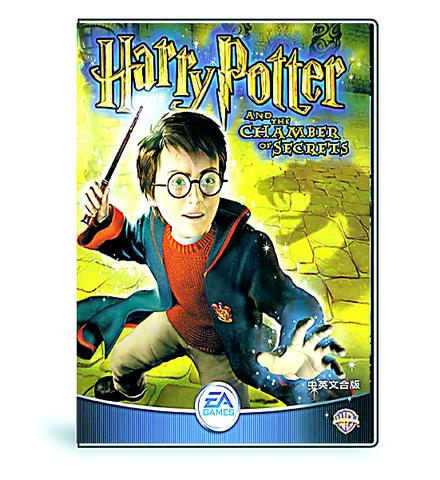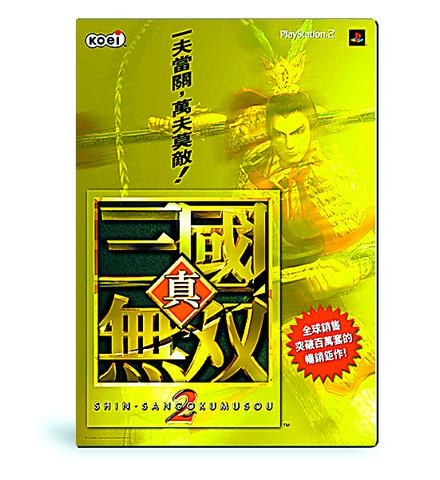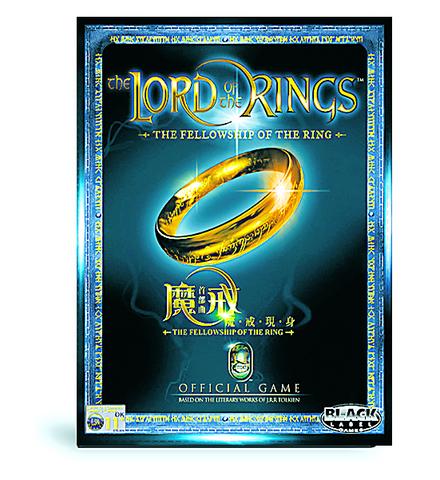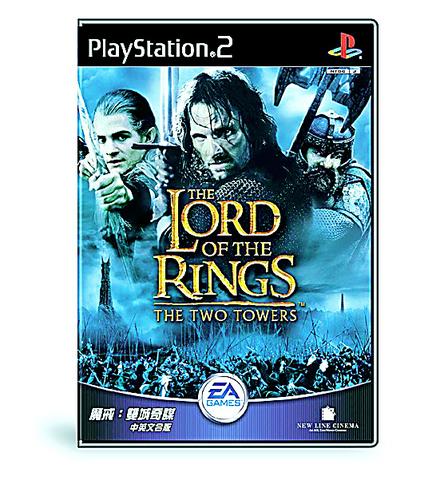Harry Potter and the Chamber
of Secrets (哈利波特二--消失的密室):

Platform: PS2, Xbox, Game Cube and PC

Domestic Distributor: Electronic Arts Taiwan
Release Date: Nov. 6

Languages: Chinese and English

Following the success of the Harry Potter books, the latest Harry Potter game -- Harry Potter and the Chamber of Secrets -- is now available in Taipei, coinciding with the release of the film on Nov. 15.
Nearly 10 million sets of the first Harry Potter game sold internationally. The latest, however, provides more options as regards platforms with PS2, Xbox, Game Cube and PC-compatible versions.
Jack Lin (林守杰), General Manager of Electronic Arts Taiwan (EAT), said the new game basically followed the plot of the second Harry Potter movie.
The player takes the role of Harry Potter in his fight against the evil wizard, Lord Voldemort, who is setting about petrifying students at Hogworts.
Players, however, may choose to act differently from the original plot.
"The player may help Mrs. Weasley get rid of the naughty fairies in her garden, or play other different games. Certainly, the Quidditch match is something that should not be missed," said Lin. "The new game also features an `inner voice' to help the player explore Potter's personality."
The game has tried to reproduce the settings of the movie so that players can freely explore J.K. Rowling's magical world.
The Lord of the Rings: The Two Towers
(魔戒二『雙城奇謀』)
Platform: PS2
Domestic Distributor: Electronic Arts Taiwan
Release Date: Nov.
Language: Chinese or English
The latest Lord of the Rings game comes right before the release of the second movie in the series.
Last year, The Lord of Rings: The Fellowship of the Ring brought the people of Taiwan into J.R.R. Tolkien's Middle Earth. The Two Towers this year features a war between mankind and powerful monsters.
The Two Towers is a third person shooter that focuses on strategic fighting and has plenty of spectacular animation. Following the plots of the first two stories of the trilogy, the player will go through an adventure and fight against Sauron.
"The player battles Sauron in 16 missions. All of the settings simulate those in the Lord of Rings movies.
"They are almost the same as what you see in the movie and that makes one feel like Frodo Baggins [the main character who inherits the Ring and steps into legend]," said Gamebase Website senior editor Antonio Lu (呂維振). The background music is by Howard Shore, whose work for the first Ring movie series won last year's academy award for original score.
Lord of the Rings:
The Fellowship of the Ring
(魔戒現身)
Platform: PC
Domestic Distributor: Universal Interactive
Release Date: Nov. 15
Language: English
For Lord of the Rings fans who have not invested in a PS2, Universal Interactive has brought out a LOTR game in PC format.
The background takes up only the first part of the trilogy. Players can take on the roles of any of the fellowship. Frodo, for example, is a poor fighter, but he has the Ring and a magic short sword to see him through his missions. Aragon wields a sword and bow, while Gandalf uses his magical powers.
"The game engine was developed by Surreal Software, whose newly developed Draken 2 engine brings Tolkien's magical world to life," said Ivan Lin (林昌明), senior editor of the Gamebase Website. "The best sequences are set in the mines of Moria, which include battles between Aragon and orcs and the duel between Gandalf and the balrog."
Game play for The Fellowship follows much the same model as that for Dungeon Siege. The point of view is third-person. The players can move by the quickest route forward, or can take advantage of various side adventures to pick up artifacts or equipment to improve their combat ability.
It is worth noting that the game contains many sections of the story which were omitted from the film, so that a character like Aragon is not restricted to combat roles.
LOTR fans playing on a PC are at a disadvantage not only because they only have the first part of the trilogy at their disposal, but also because they have to make do with inferior graphics, as the PC version is no match for the fluidity of PS2.
Destiny Warriors II:
Shin Sangokumusou 2
(真三國無雙二)
Platform: PS 2
Domestic Distributor: Taiwan Koei Entertainment Software
Release date: Already available
Language: Chinese and English
The warfare during the Three Kingdoms period between 500BC and 200BC has been one of the most fruitful sources of material for game developers. Among the games about the Three Kingdoms, the first first-person shooter is the Destiny Warriors series developed by Japan's Koei Entertainment Software. It has quickly established itself as one of the most popular games in Taiwan.
The Japanese and English editions of Destiny Warriors II were brought to market last year and the Chinese one was released this September.
"So far, more than two million sets have been sold, the best record among games featuring the Three Kingdoms," said Liu Cheng-ho (劉政和), Taiwan Koei's vice president.
The player simply has to choose a historic figure from the Three Kingdoms. The role-player will lead the army to fight with enemies in historical battles to unite China, using the different skills of different characters.
"It is not an RPG game. One does not interact with non-player characters. Nor is it a real-time strategy game (RTS). There is no need for the player to collect resources for later fighting. It is more like an ancient Counter Strike. The only difference is that guns are replaced by swords," said Ivan Lin, senior editor of the Gamebase Website.

In the March 9 edition of the Taipei Times a piece by Ninon Godefroy ran with the headine “The quiet, gentle rhythm of Taiwan.” It started with the line “Taiwan is a small, humble place. There is no Eiffel Tower, no pyramids — no singular attraction that draws the world’s attention.” I laughed out loud at that. This was out of no disrespect for the author or the piece, which made some interesting analogies and good points about how both Din Tai Fung’s and Taiwan Semiconductor Manufacturing Co’s (TSMC, 台積電) meticulous attention to detail and quality are not quite up to

April 21 to April 27 Hsieh Er’s (謝娥) political fortunes were rising fast after she got out of jail and joined the Chinese Nationalist Party (KMT) in December 1945. Not only did she hold key positions in various committees, she was elected the only woman on the Taipei City Council and headed to Nanjing in 1946 as the sole Taiwanese female representative to the National Constituent Assembly. With the support of first lady Soong May-ling (宋美齡), she started the Taipei Women’s Association and Taiwan Provincial Women’s Association, where she

Chinese Nationalist Party (KMT) Chairman Eric Chu (朱立倫) hatched a bold plan to charge forward and seize the initiative when he held a protest in front of the Taipei City Prosecutors’ Office. Though risky, because illegal, its success would help tackle at least six problems facing both himself and the KMT. What he did not see coming was Taipei Mayor Chiang Wan-an (將萬安) tripping him up out of the gate. In spite of Chu being the most consequential and successful KMT chairman since the early 2010s — arguably saving the party from financial ruin and restoring its electoral viability —

It is one of the more remarkable facts of Taiwan history that it was never occupied or claimed by any of the numerous kingdoms of southern China — Han or otherwise — that lay just across the water from it. None of their brilliant ministers ever discovered that Taiwan was a “core interest” of the state whose annexation was “inevitable.” As Paul Kua notes in an excellent monograph laying out how the Portuguese gave Taiwan the name “Formosa,” the first Europeans to express an interest in occupying Taiwan were the Spanish. Tonio Andrade in his seminal work, How Taiwan Became Chinese,